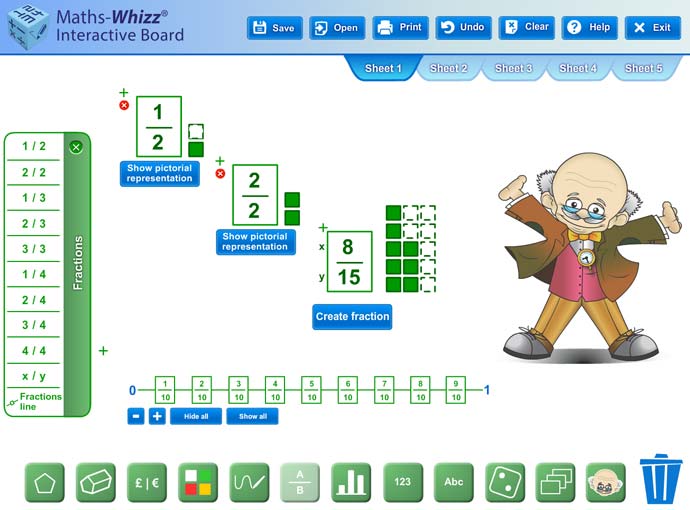Whizz is currently in discussions with other iTalk2Learn partners around the possible integration of Fractions Lab into Maths-Whizz’s set of Teachers’ Resources.
Why integrate Fractions Lab with Maths-Whizz?
This effort would serve two purposes:
- Support further research and development of Fractions Lab for the benefit of iTalk2Learn
- Explore the viability of Fractions Lab as a commercial application within the Maths-Whizz product
What needs to be considered?
As a commercial partner, Whizz is mindful both of both the opportunities and challenges presented by the Fractions Lab integration.
Here are three key points of consideration as we move these discussions forward.
1) Is there an appetite for a dedicated teaching tool for Fractions?
While Fractions Lab has been developed as an Exploratory Learning Environment, we are also conceiving it as an instructional tool. The set of Teachers’ Resources in Maths-Whizz already offers a high volume of content as well as an interactive digital whiteboard, complete with virtual manipulatives that support open-ended instruction across the curriculum.
Fractions Lab may be thought of as a focused interactive whiteboard, with all manipulatives geared towards Fractions instruction. A key learning point is to understand the interplay between the breadth of the interactive board (which does offer basic representations of Fractions) and the depth of Fractions Lab
2) How critical is it that Whizz has long-term access rights to Fractions Lab?
Under the terms of the Consortium Agreement (signed ahead of the iTalk2Learn project), all partners have open access to Fractions Lab, for non-commercial use, during the lifespan of the project.
It is conceivable, therefore, that Maths-Whizz users may only have access to Fractions Lab for a limited time. Only a commercial licensing agreement with the appropriate partners would safeguard longer-term access. In the absence of such an agreement Whizz will have to carefully manage expectations with customers, perhaps by positioning the app as part of a research effort that is temporal by its very nature.
3) What services will be provided around the product itself?
Maths-Whizz is not just a product; it is an entire suite of services that provides teachers with on-going training and support in enriching their instructional practice. It would thus be limiting to offer Fractions Lab as a self-contained app. There are two main ways in which this could be addressed.
The first is instruction manuals and other in-product training resources, which are being developed anyway as part of the iTalk2Learn deliverables. As well as this, with the support of IOE there is an opportunity to provide rich professional development opportunities – already delivered through workshops and seminars – as part of the Whizz training. Such training would be heavily geared towards the pedagogical foundations of Fractions Lab, and implications for classroom instruction.

We look forward to talking through these points, both internally within Whizz and also with iTalk2Learn partners. There is shared enthusiasm around the prospect of commercialising an output of research.
In many ways Maths-Whizz is the perfect testing ground for Fractions Lab; what better way to gauge teachers’ response to the tool than putting it directly in their hands?


